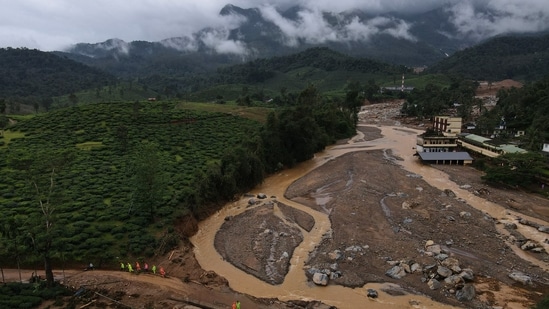Wayanad: Decentralisation in disaster management
Author- D Dhanuraj, chairman, Centre for Public Policy Research, & Ananthitha Anandan, general manager, Ultra-Tech Environmental Consultancy & Laboratory, Kochi
The news and the images from the landslides in Wayanad district in Kerala depicting horrific losses prompt us to revisit the disaster management and governance of areas vulnerable to natural disasters. The realpolitik of the times has led to contestation about information shared and interpreted at various levels of governance and administration and how affected communities received those. It is rather strange to get into such an animated discussion post a disaster at the cost of loss incurred already.

Like many other states, Kerala faces immense threat due to climate crisis-induced disasters and many areas are identified as vulnerable. The14th State Plan based on the working group report on disaster management mentions ‘The scientific analysis has also brought out that there is a knowledge gap, a lack of disaster risk awareness and a lack of scientific mitigation measures.’ Let us have a look at how decentralisation can mitigate the risk of these inherent limitations, along with improving our disaster management planning, preparedness and rehabilitation.
It goes without saying that we follow centralised information dissemination than a decentralised shared approach at the local level. The role of local self-governments is often neglected or ignored in information dissemination exercises and the need for strengthening such institutions are met with lack of interest in transferring resources and power from the state to the local governments.
The rescue, relief and rehabilitation work demand huge resource mobilisation and spending. The resources are often collected at the centralised level, and it ignores the beneficiaries and the governance system at the local level. This leads to accusations and complaints on how the money is being spent, as such an arrangement often ignores the requirements and demands of the affected communities.
Planning to restore the livelihoods and the social security of the affected communities in the medium-term and infrastructure development in the long term is overlooked by the instant political promises. In a centralised planning system, the decisions are imposed, and the beneficiaries lack ownership and control over them. This framework needs an urgent revisit as the collected resources shall be in a joint account of the state and the local governments of the affected areas to ensure accountability and the ownership of the post relief works.
The local governments at the district, block and the local levels needs to be considered and any taskforce for the planning, rehabilitation and restoration shall be comprised of their representatives. The communities affected shall be given community health insurance plans, in case it was absent previously in a mapped disaster vulnerable area, for a reasonable period. The premium could be paid by the state. It helps them to seek medical assistance and treatment anywhere in the state. Students shall be provided with educational scholarships till they complete higher education. The resource mobilisation of the scale helps the beneficiary to receive a sizable direct cash transfer if one demands it. The dialogue between the community and the state is very important in any future planning and it helps in better policy perspectives and prescriptions.
Science, technology and innovation play a crucial role in the Sendai Framework for Disaster Risk Reduction 2015-2030. The framework highlights the role of local governments in effective preparedness to the rehabilitation stages. Audit of the local institutions about their resources available, the capacities and the data management skills shall be the routine protocols in the vulnerable areas. Proactive drills and demos are part of the systemic design to mitigate the risks at the same time skilling the local population. It is worth exploring any of District Planning Committee (DPC) have set aside a medium-term plan for the disaster management. Global experience is that resilient cities cities are more attractive to investors and businesses, fostering economic growth and stability. The challenge is that the governance in the rural areas are given resources and power to build a resilient and empowered structure and strategy to face off the disasters in future without any impositions and centralised planning.
The local governments in the areas vulnerable to natural disasters need to be set up with the local disaster management units (LDMUs). These LDMUs, shall be branched out from the national and state level, and shall do the local mapping of the disaster-prone areas and identify the dissemination techniques suitable for their areas. The LDMUs shall be responsible for data collection, and information sharing in a scientific manner. This shall follow protocols such as objectivity, neutrality and collectivity to inform and incentivise the local communities and the individuals in their decision making about their safety and the future.
This article is authored by D Dhanuraj, chairman, Centre for Public Policy Research, and Ananthitha Anandan, general manager, Ultra-Tech Environmental Consultancy & Laboratory, Kochi.





